


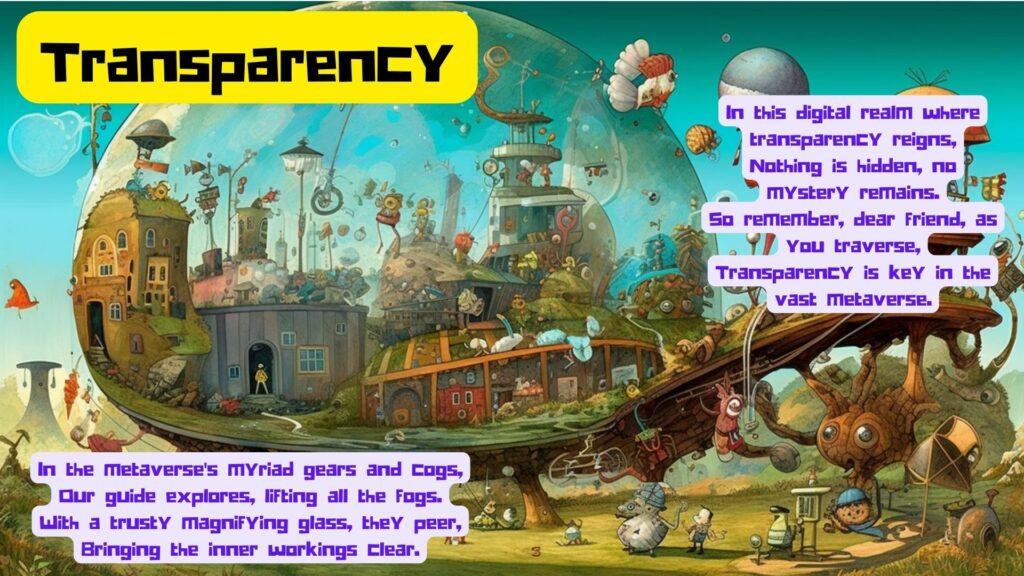

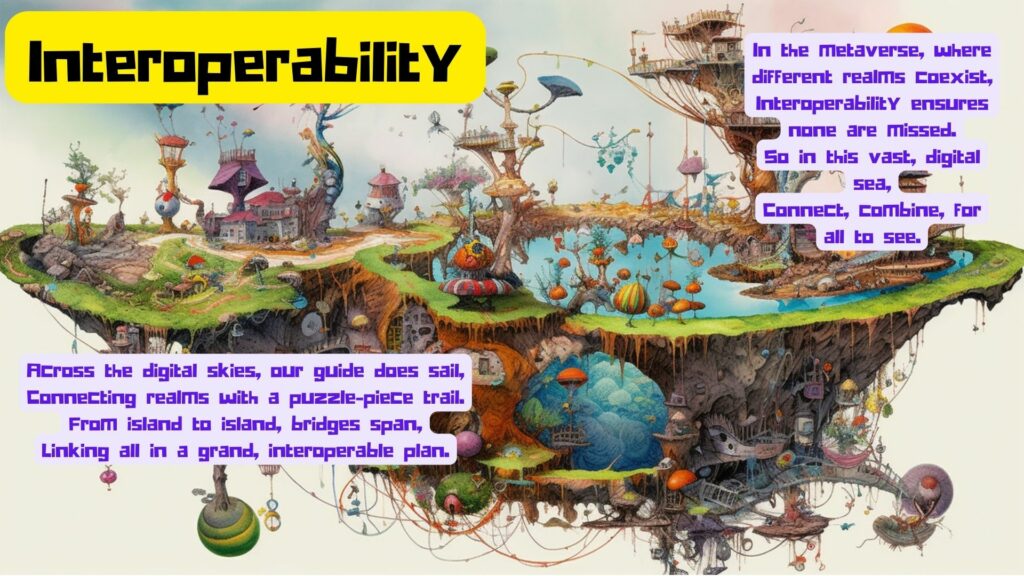
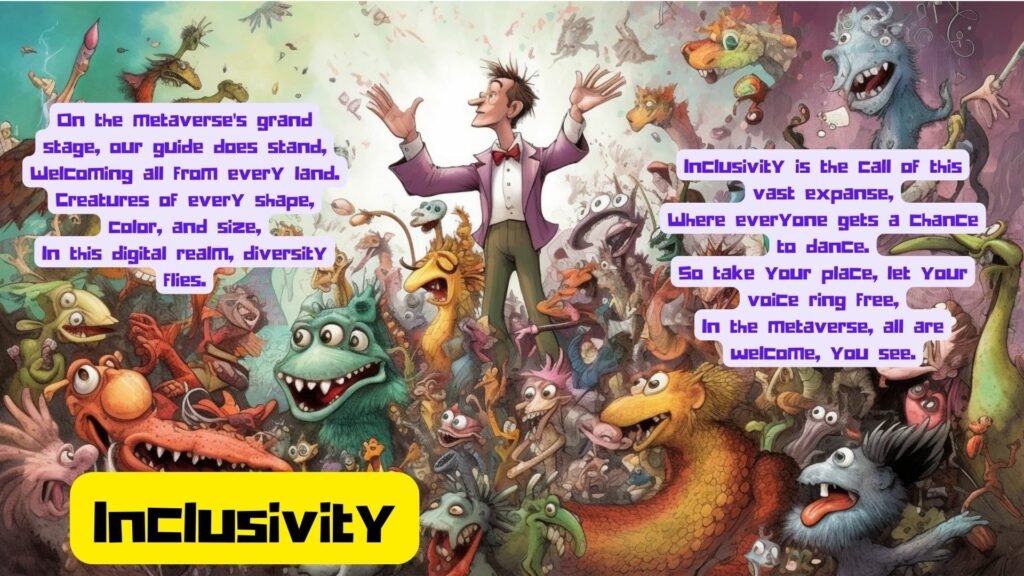
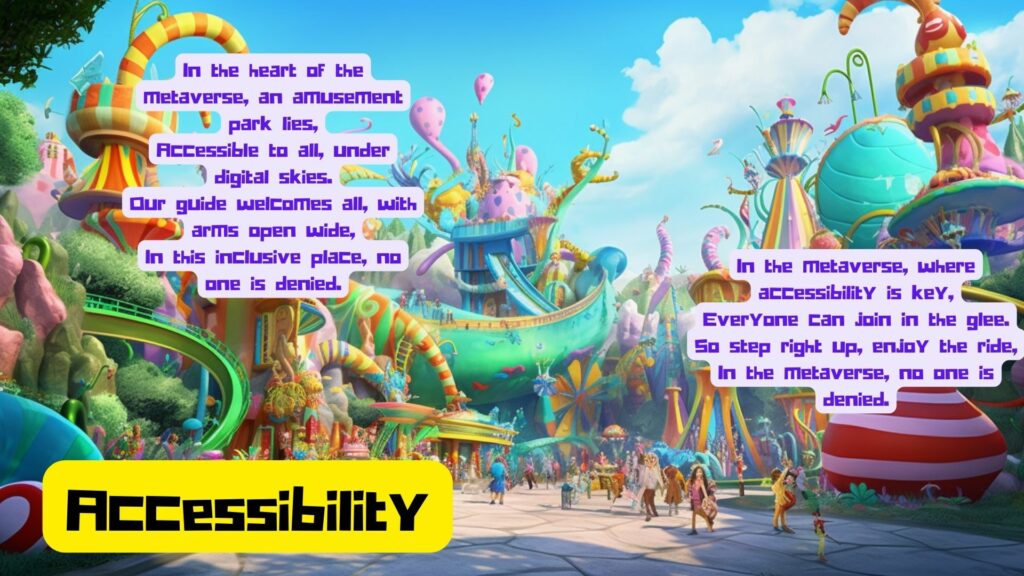
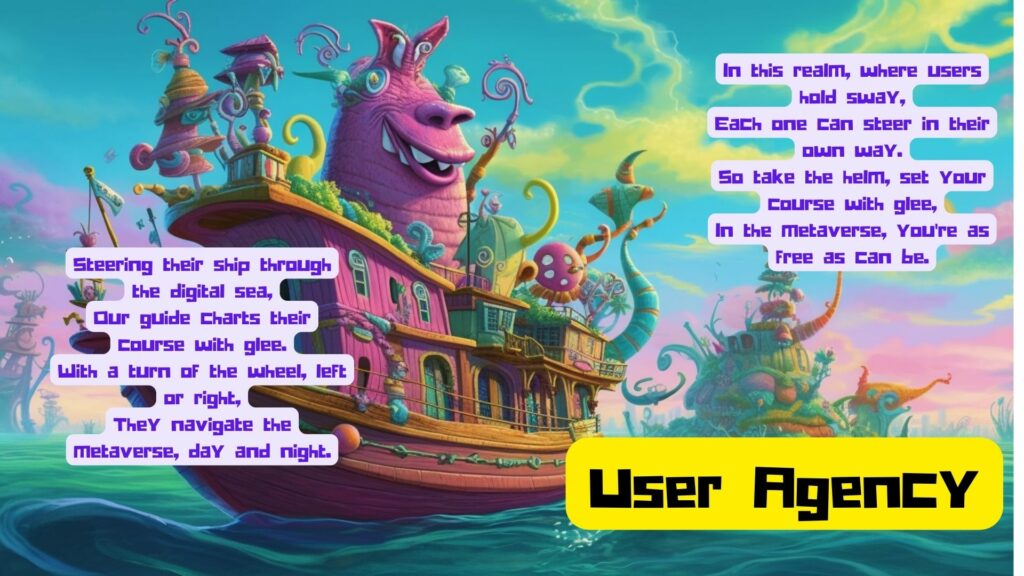

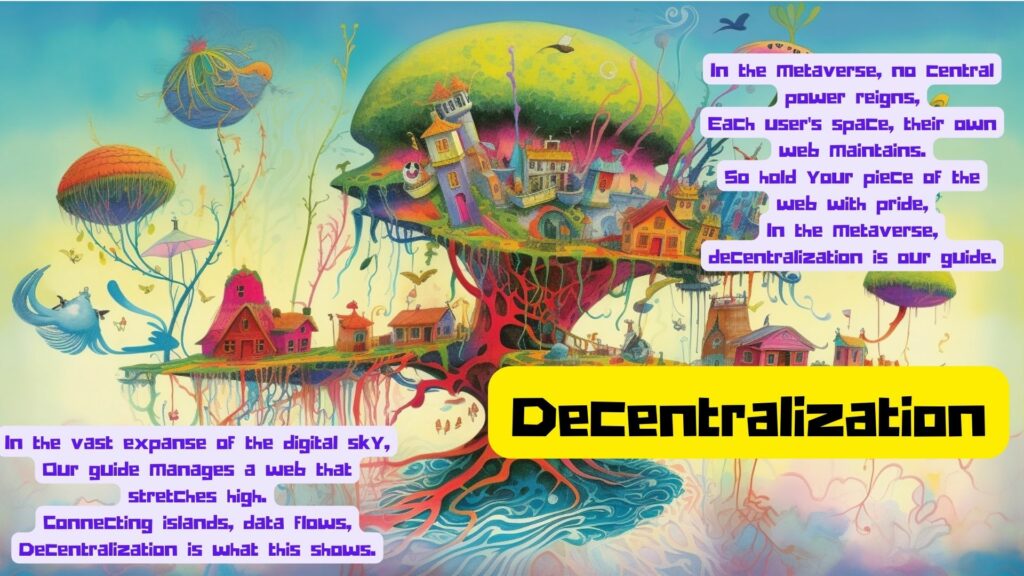











Part 2: Components and Systems: The Building Blocks of ChipprAGI

In our previous blog post, we introduced ChipprAGI, a modular artificial general intelligence JavaScript framework designed for creating complex applications in various domains, such as robotics, smart city management, and natural language processing.We also touched upon the Entity-Component-System (ECS) architecture at the heart of ChipprAGI, which promotes modularity, reusability, and scalability by organizing application data and logic into entities, components, and systems. In this second part of our blog series, we will delve deeper into the building blocks of ChipprAGI: components and systems. By understanding the roles and interactions of components and systems in ChipprAGI, developers can more effectively leverage the framework’s capabilities to create innovative and intelligent solutions, such as self-driving cars, energy-efficient smart grids, or advanced language analysis tools.
Components play a vital role in ChipprAGI’s architecture as they encapsulate the data and attributes associated with entities. In the context of ChipprAGI, entities represent tasks in a task list. By utilizing components, developers can create modular, reusable code that can be easily managed and maintained.
In ChipprAGI, there are several commonly used components that can be applied across a wide range of applications. Here are a few examples:
These common components can be easily reused across different projects, streamlining the development process and promoting consistent and maintainable code.
In addition to the built-in components provided by ChipprAGI, developers can create custom components to suit their specific needs. When creating a custom component, it’s important to keep the following best practices in mind:
By following these best practices, developers can create custom components that seamlessly integrate with the ChipprAGI ecosystem and enhance the capabilities of their applications.
While components define the data and attributes of tasks, systems in ChipprAGI implement the logic and behavior associated with these tasks. Systems process entities with specific sets of components, performing actions or updating the state of entities based on the component data. By organizing logic within systems, developers can create modular, reusable, and maintainable code that is easily extensible.
ChipprAGI utilizes the Pub/Sub pattern for communication between systems, ensuring that messages and events are delivered in a consistent and efficient manner. Depending on the chosen configuration, ChipprAGI can use IPFS, Redis, or PubSubJS for message transportation, providing flexibility and scalability to developers.
ChipprAGI includes several core systems that provide common functionalities required in task management applications. Here are a few examples:
Developers can create custom systems to add new functionality or modify existing behaviors in their ChipprAGI applications. Some possible custom systems include:
By creating custom systems, developers can expand the capabilities of their ChipprAGI applications to address specific requirements or solve unique problems.
In ChipprAGI, the interaction between components and systems is crucial to ensure efficient data flow and maintainable code. Components encapsulate the data and attributes of tasks, while systems implement the logic and behavior associated with these tasks. The modular nature of ChipprAGI’s architecture enables systems to process entities with specific sets of components, optimizing performance and promoting reusability.
Systems in ChipprAGI can query entities based on the components they possess. This approach allows systems to focus on the tasks relevant to their specific functionalities, ensuring that they only process entities with the necessary data. For example, a Task Scheduler system might query entities with the DueDate and Parent components to organize tasks based on their deadlines and dependencies.
As systems process entities, they may update the data stored in the components. This could involve modifying existing values, adding new data, or removing unnecessary information. By updating component data, systems can influence the behavior of other systems, create side effects, or trigger events. For example, a Task Completion system might update a task entity’s status from “in progress” to “completed,” which in turn could trigger the Notification system to send a message to the user.
To facilitate interaction between components and systems, ChipprAGI employs the Pub/Sub pattern for message passing and event-driven communication. This approach ensures that systems can broadcast messages or events to other systems without needing to know their specific implementation details, promoting loose coupling and maintainable code. Depending on the chosen configuration, ChipprAGI can use IPFS, Redis, or PubSubJS for message transportation.
By following standardized communication patterns and efficiently managing the interaction between components and systems, ChipprAGI enables developers to create powerful, flexible, and scalable applications that can adapt to a wide range of use cases and requirements.
When building an application with ChipprAGI, the first step is to identify the requirements and desired functionality. This process involves understanding the target audience, the intended use cases, and the key features that will be implemented. By establishing a clear vision for the application, developers can effectively select and design the appropriate components and systems.
Once the application requirements are defined, developers can begin designing and creating the necessary components. This involves deciding on the data structures and attributes that will be associated with the various tasks in the application. Developers can utilize existing components provided by ChipprAGI, such as Parent, Repeatable, and Description, or create custom components tailored to their specific needs.
With the components defined, developers can then implement the systems responsible for processing the tasks and managing their behavior. Systems in ChipprAGI can be built using core systems like the Task Scheduler, Task Completion, and Notification System, or by creating custom systems to address specific application requirements.
When creating custom systems, developers should focus on a single responsibility, encapsulate logic and behavior, and use standardized communication patterns to ensure seamless integration with other systems and components.
To add custom systems and components, developers can simply place the relevant files in the ‘./systems/active’ or ‘./components/active’ folders, and ChipprAGI will automatically load or unload them as needed. This dynamic loading mechanism allows for easy integration and management of custom systems and components without the need to modify the core ChipprAGI framework.
For developers looking to create VR/AR applications, the chippragi-aframe-react template repo can be used to speed up the development process. This template provides a pre-configured environment that combines ChipprAGI with A-Frame and React, enabling rapid development and deployment of immersive experiences
To enable communication between systems, developers must configure the Pub/Sub message transportation mechanism. Depending on the application’s requirements and desired performance, developers can choose between IPFS, Redis, or PubSubJS for message transportation. By configuring the appropriate message passing infrastructure, developers ensure efficient communication and data flow between components and systems.
The final step in building an application with ChipprAGI is to develop the user interface and visualization components. Depending on the application’s requirements, developers can create web UIs, VR environments, or 3D representations using libraries like A-Frame and React. The user interface should be designed to interact seamlessly with the underlying components and systems, providing users with an intuitive and engaging experience.
Throughout the development process, it is essential to continuously test and iterate on the application, ensuring that the components and systems work as expected and meet the intended requirements. ChipprAGI uses the Mocha testing framework, and developers can create custom ‘*.test.js’ files to add unit tests for their components and systems. These tests can be placed in the ‘test’ folder and run using the ‘yarn test’ command. By following a robust testing methodology, developers can identify and address potential issues, optimize performance, and deliver a high-quality application.
By combining the power of ChipprAGI’s modular architecture with a thoughtful development process, developers can build robust, flexible, and scalable applications that address a wide range of use cases and requirements.
ChipprAGI’s modular artificial general intelligence framework leverages the power of Entity-Component-System architecture to create robust, flexible, and scalable applications. By breaking down the application logic into components and systems, developers can efficiently manage data, implement behaviors, and build applications that can adapt to a wide range of use cases and requirements.
Throughout this part of the blog series, we have explored the core components and systems in ChipprAGI, delved into the interaction between them, and discussed how to build an application using the framework. We have also highlighted the dynamic loading of custom systems and components, the use of templates like chippragi-aframe-react for accelerated development, and the importance of testing and iteration in the development process.
By understanding the building blocks of ChipprAGI, developers are well-equipped to create powerful applications in various fields, including robotics, natural language processing, and VR/AR experiences. As we move through the rest of the blog series, we will continue to explore other essential aspects of ChipprAGI, such as the ECS architecture, messaging and communication strategies, and real-world applications.
Stay tuned for more insights into the ChipprAGI framework, and join us in harnessing the power of artificial general intelligence to build innovative, adaptable, and efficient applications.

Welcome to the first part of our blog series on ChipprAGI, a powerful, modular artificial general intelligence (auto GPT) JavaScript framework designed to enable the creation of complex applications in the fields of robotics and automation. At its core, ChipprAGI leverages the Entity-Component-System (ECS) architecture, which provides a highly flexible and scalable foundation for building AI-driven applications. In this installment, we’ll provide a high-level overview of the purpose and goals of ChipprAGI, its applications, and the benefits it provides to developers and users. This foundation will set the stage for the more in-depth exploration of ChipprAGI’s components and systems in the following blog posts.
TL;DR: Link to Repo
Before diving into the purpose and goals of ChipprAGI, it’s important to briefly introduce the basics of the Entity-Component-System (ECS) architecture. ECS is a software architectural pattern that promotes modularity and reusability by organizing application data and logic into three distinct categories:
By separating data and logic into components and systems, the ECS architecture enables developers to create highly modular and reusable code, making it easier to assemble and maintain complex applications.
ChipprAGI was created with the aim of providing a flexible, scalable, and extensible architecture that simplifies the development of complex AI-driven applications. The primary goals of ChipprAGI are:
ChipprAGI’s flexible architecture lends itself to a wide range of applications across multiple industries. Its modularity and ease of customization make it particularly well-suited for developing solutions that require advanced artificial intelligence and machine learning capabilities. Let’s explore some of the industries where ChipprAGI could have a significant impact.
Robotics is one area where ChipprAGI excels. By utilizing ChipprAGI’s powerful components and systems, developers can create advanced robotic solutions for a variety of applications. For instance, ChipprAGI can be employed to develop robotic control systems, computer vision algorithms, and navigation strategies, which are essential for building sophisticated robots in manufacturing and healthcare sectors. In manufacturing, these robots can perform tasks like assembly and quality inspection, whereas, in healthcare, they can be used to assist in surgical procedures or deliver medications to patients.
In the field of smart city management, ChipprAGI offers a versatile framework for building applications that optimize various aspects of urban planning and infrastructure. For example, developers can create intelligent solutions that improve traffic management, energy consumption, and waste disposal, ultimately leading to more efficient and sustainable urban environments. ChipprAGI-powered applications can help city planners to better manage resources, reduce pollution, and enhance the overall quality of life for residents.
Natural language processing is another domain where ChipprAGI’s capabilities shine. Thanks to its seamless integration with state-of-the-art language models like OpenAI’s GPT, developers can build applications that understand, generate, and analyze human language with ease. These applications can be used to enhance customer service, perform sentiment analysis, or generate high-quality content. For instance, a ChipprAGI-based application could be used by a company to analyze customer reviews and social media posts, helping them identify areas for improvement or potential market trends.
As demonstrated by these examples, ChipprAGI’s modular and extensible architecture is well-suited for a wide variety of applications across diverse industries. Its ability to harness the power of artificial intelligence and machine learning, coupled with its customizable nature, makes it an ideal choice for developers looking to create innovative and intelligent solutions.
Building with the ChipprAGI framework offers numerous benefits to both developers and users, including:
Faster Development: ChipprAGI’s modular architecture enables developers to quickly assemble applications using pre-built components and systems, significantly reducing development time.
Scalability: The Entity-Component-System (ECS) architecture at the core of ChipprAGI ensures that applications can easily scale to handle increasing complexity and size.
Customizability: ChipprAGI allows developers to easily create their own components, systems, and integrations, tailoring the framework to meet their specific needs and requirements.
Interoperability: ChipprAGI’s standardized messaging and communication strategies enable seamless interaction between components and systems, promoting a cohesive and well-orchestrated application.
In this first installment of our ChipprAGI blog series, we provided an overview of the purpose and goals of ChipprAGI, some potential applications, and the benefits it offers to developers and users. With this foundation in place, we’ll dive deeper into ChipprAGI’s core components and systems in the following blog posts, providing a comprehensive understanding of this powerful, modular AI-driven software architecture.

Storytelling has been a vital part of human culture for centuries, and as technology advances, the ways in which we tell stories continue to evolve. Prompt engineering, an AI-driven technology, is now redefining the art of storytelling in entertainment, from movies and television to video games and virtual reality experiences. In this article, we’ll explore how prompt engineering is revolutionizing the entertainment industry, creating immersive, interactive, and personalized stories that captivate audiences like never before.

By leveraging prompt engineering, content creators can generate unique and engaging narratives that adapt to the preferences and choices of individual users. This cutting-edge AI technology allows storytellers to explore new concepts and styles, pushing the boundaries of traditional storytelling and enriching the entertainment landscape.

Prompt engineering enables content creators to develop interactive and personalized stories, empowering audiences to shape their own narrative experiences. By tapping into the user’s preferences, emotions, and choices, stories can unfold in unique and unexpected ways, fostering a deeper connection with the audience and ensuring a truly memorable experience.

The use of prompt engineering in the entertainment industry not only revolutionizes storytelling but also enhances the creation of immersive worlds. Content creators can generate rich and detailed environments, populated with dynamic and lifelike characters, that draw audiences in and encourage exploration. This level of immersion is particularly valuable in the context of virtual reality and video games, where users can actively participate in the narrative and interact with the environment around them.

As prompt engineering becomes increasingly prevalent in the entertainment industry, it has the potential to transform the way stories are told and experienced. By offering audiences personalized, interactive, and immersive narratives, content creators can forge deeper connections with their audience and redefine the art of storytelling for the digital age. As we continue to explore the limitless possibilities of prompt engineering, we can look forward to a future filled with captivating and innovative entertainment experiences that truly capture the imagination.

The gaming industry is no stranger to embracing cutting-edge technologies, and prompt engineering is no exception. This AI-powered tool is opening up new horizons for game developers and designers, enabling them to create more engaging, immersive, and personalized gaming experiences. In this article, we’ll explore the impact of prompt engineering on the gaming industry and how it’s reshaping the future of gaming.
Revolutionizing Game Design

Prompt engineering allows game developers to rapidly generate unique characters, environments, and assets, streamlining the game design process and offering unparalleled creative freedom. This groundbreaking technology enables designers to experiment with various styles and concepts, resulting in innovative and diverse gaming experiences.
Unleashing Interactive Storytelling

With the power of prompt engineering, game developers can create highly interactive and dynamic narratives that adapt to player choices and actions. This level of personalization and responsiveness creates a deeply engaging experience, allowing players to truly shape the outcome of the story and forging a strong connection with the game world.
Transforming the Metaverse

As the metaverse continues to grow and evolve, prompt engineering offers unique opportunities for game developers to create immersive and interconnected virtual worlds. By leveraging AI-generated content, developers can build vast, dynamic landscapes filled with diverse characters and experiences, enhancing the overall appeal of the metaverse.
The Future of Gaming

As prompt engineering continues to make waves in the gaming industry, its potential to transform the way games are designed, developed, and experienced is undeniable. By harnessing the power of AI-generated content, game developers can create captivating and immersive gaming experiences that push the boundaries of what is possible in the world of gaming.

Easter is a time for family, friends, and, of course, Easter eggs! And hiding Easter eggs can be a lot of work, especially if you have a lot of eggs. That’s where zero-knowledge proofs come in!

Zero-knowledge proofs are a type of cryptographic technique that allows one party to prove to another party that they know a secret without revealing the secret itself. This can be useful for a variety of applications, including hiding Easter eggs.
Here’s how it works:
Here’s an example of a zero-knowledge proof that a parent could use to prove to their child that they know the number of eggs:
This is just one example of how zero-knowledge proofs can be used to hide Easter eggs. There are many other ways to use this technique, so get creative and have fun!

Here are some additional tips for hiding Easter eggs with zero-knowledge proofs:

As the advertising landscape continues to evolve, brands and creative agencies are constantly seeking innovative ways to capture the attention of their audiences. Prompt engineering, an AI-driven technology, is emerging as a powerful tool that enables advertisers to generate completely unique visuals and concepts, transcending the constraints of traditional design software and stock images. In this article, we’ll explore how prompt engineering is shaping the future of advertising, resulting in higher engagement and conversion rates.

Prompt engineering involves the fine-tuning of Text-to-Image prompts to create consistent, usable, and high-quality images. This cutting-edge AI technology allows advertisers to quickly and easily generate tailor-made campaigns that resonate with their target audience. By tapping into the limitless potential of prompt engineering, advertisers can bring their concepts to life, creating captivating visuals that stand out in the competitive marketplace.

With prompt engineering at their disposal, advertisers can create highly customized campaigns that cater to the specific needs and preferences of their target audience. By generating one-of-a-kind visuals, brands can better communicate their unique selling points, ensuring that their message resonates with consumers. Moreover, prompt engineering allows advertisers to experiment with various styles and approaches, fostering a new level of creativity and flexibility in the industry.

As the metaverse continues to gain traction, advertisers have a unique opportunity to leverage prompt engineering to create immersive and interactive ad experiences within this virtual space. From designing dynamic billboards to crafting engaging product demonstrations, prompt engineering offers a wealth of possibilities for brands looking to make an impact in the metaverse. By incorporating this AI-driven technology into their advertising strategies, companies can forge strong connections with their audience and drive brand awareness in the digital realm.
As prompt engineering becomes more widely adopted, its potential to transform the advertising industry is undeniable. By unlocking new levels of creativity and innovation, this technology empowers brands and creative agencies to craft memorable ad campaigns that captivate audiences and drive results. As we move forward into the age of the metaverse, prompt engineering will undoubtedly play a pivotal role in shaping the future of advertising, heralding a new era of creativity and boundless possibilities.

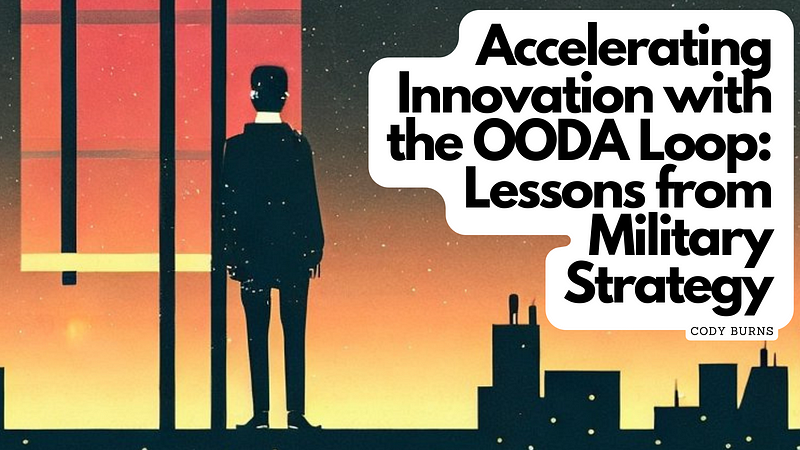
In today’s fast-paced and ever-changing business world, companies are constantly seeking ways to innovate and stay ahead of the competition. One approach to achieving this agility is using a process known as the OODA loop, a decision-making framework developed by US Air Force Colonel John Boyd. By adopting this approach, business leaders, entrepreneurs, and innovators can learn valuable lessons on how to accelerate innovation and gain a competitive edge.

The OODA loop is a four-step decision-making process that includes observe, orient, decide, and act. The first step, observe, involves gathering information and data from the environment. The second step, orient, involves analyzing and interpreting this information to gain a clear understanding of the situation. The third step, decide, involves making a decision based on the analysis, and the fourth step, act, involves acting based on the decision.
By following this process, organizations can make informed decisions and act quickly to capitalize on opportunities in the market. It also allows organizations to respond quickly to changes in the market and adjust their strategies accordingly.
As a business leader, entrepreneur, or innovator, adopting the OODA loop can help you stay ahead of the competition and drive innovation within your organization. By observing the market and orienting yourself to the latest trends and technologies, you can make informed decisions and act quickly to implement new strategies. The OODA loop is a continuous process that allows you to constantly monitor and adjust your approach based on feedback from the market, enabling you to stay ahead of the curve and drive innovation within your organization.
The OODA loop can be a powerful tool for driving innovation within organizations. By continuously observing the market and orienting to new information, organizations can make faster and more informed decisions, allowing them to stay ahead of the competition. Here are two practical examples of how the OODA loop can be applied to drive innovation:
By using the OODA loop to drive innovation, organizations can make faster and more informed decisions, stay ahead of the competition, and achieve greater success. The OODA loop is a continuous process, and organizations that embrace it as part of their culture will be better positioned to succeed in today’s rapidly changing business environment.
In this section, we will explore the four stages of the OODA loop and how they can be applied to drive innovation in technology strategy. By applying the OODA loop, we can gather and analyze relevant data, make informed decisions, and take action to continuously improve and innovate our technology solutions.

In the OODA loop, the “Observe” stage involves collecting and analyzing relevant data to gain a comprehensive understanding of the current situation. As a technology strategist, this could include understanding the client’s business goals, market trends, and the potential use cases of blockchain-based digital collectibles. By using data to inform our decision-making, we can make more informed and strategic choices that are backed by evidence rather than gut instinct.
For example, let’s say we are working with a client who wants to enhance their brand image and increase customer engagement. We would start by collecting and analyzing data on their target market, competitors, and customer feedback. This would allow us to identify areas for improvement and potential opportunities for implementing blockchain-based digital collectibles.

The “Orient” stage of the OODA loop involves interpreting the data collected in the “Observe” stage and using it to develop a comprehensive understanding of the current situation. This involves analyzing the data and identifying patterns and trends that can inform decision-making.
For example, after analyzing the data collected in the “Observe” stage, we may identify that the client’s target market is interested in unique, personalized products and experiences. We could then interpret this data to understand that implementing a blockchain-based digital collectible platform could provide customers with a new and exciting way to engage with the brand.
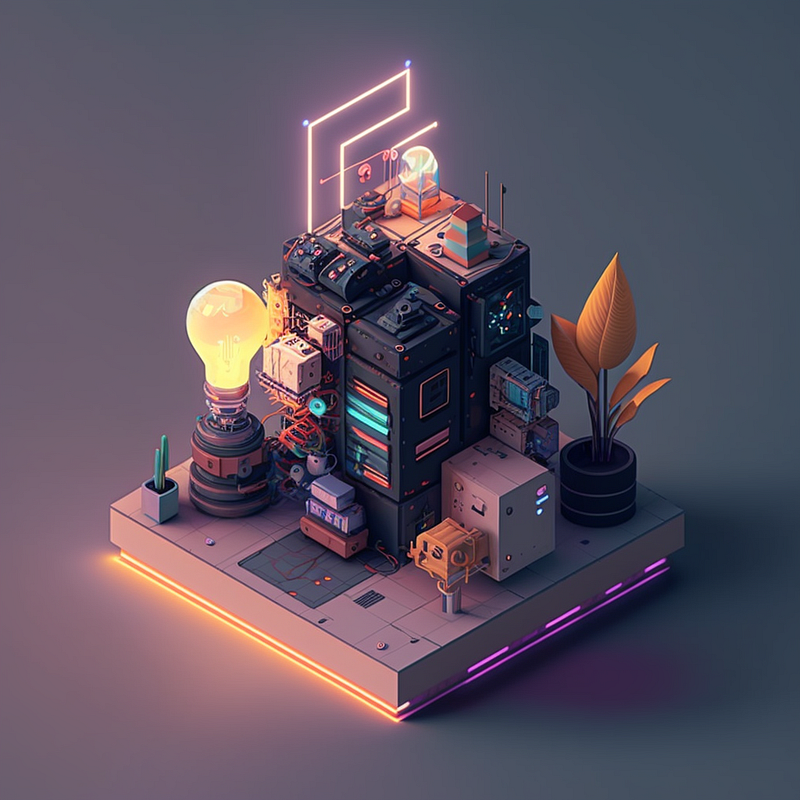
The “Decide” stage of the OODA loop involves using the insights gained in the “Observe” and “Orient” stages to make informed decisions. This involves selecting the right technology and tools to address the identified areas for improvement and meet the client’s business goals.
For example, based on our analysis in the “Observe” and “Orient” stages, we may recommend implementing a blockchain-based digital collectible platform to enhance the client’s brand image and increase customer engagement. We would work with the client to select the right technology and tools to implement this solution, taking into account factors such as budget, timeline, scalability, and the business value we are wanting to achieve during this transformation.

The “Act” stage of the OODA loop involves implementing the decisions made in the “Decide” stage and monitoring the results. This involves tracking key performance indicators (KPIs) and making adjustments as needed to continue driving value for the client.
For example, after implementing the blockchain-based digital collectible platform, we would track KPIs such as customer engagement, brand awareness, and sales. We would use this data to monitor the success of our strategy and adjust as needed to continue driving value for the client. This could include expanding the platform to include new products or features, optimizing the user experience, or exploring new technologies to stay ahead of the competition.
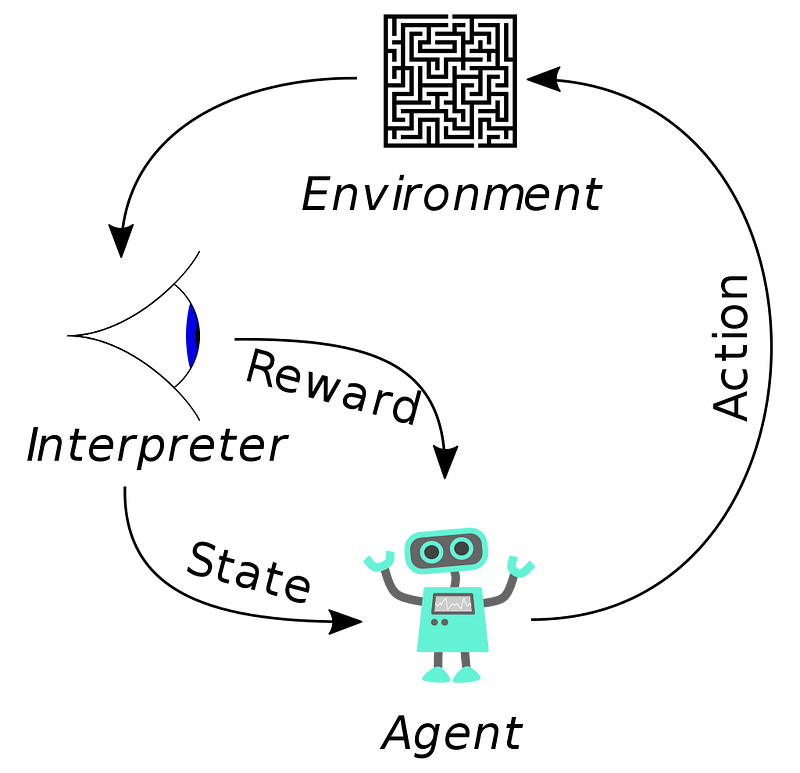
While it isn’t the focus of the current AI hype/news cycle, I can’t write an article about the OODA loop without talking about one of my personal favorite ML fields: reinforcement learning.
Reinforcement learning, like the OODA loop, is a process of continuous improvement based on feedback from the environment. The difference is the RL is focused on solving complex computer problems. It has been used to solve problems in gaming and robotics and has shown promise in a wide range of industries. In fact, it’s not hard to draw parallels between the OODA loop and reinforcement learning — both involve a cycle of observation, orientation, decision-making, and action. As we continue to develop new technologies and strategies for innovation, it’s important to keep in mind the lessons we can learn from these iterative approaches to problem-solving.
A famous example of reinforcement learning in action is the development of AlphaGo and AlphaZero, two artificial intelligence programs developed by Google. AlphaGo and AlphaZero were trained to play the games of Go and chess, respectively, using reinforcement learning. By repeatedly playing against themselves and learning from their successes and failures, these programs were able to achieve unprecedented levels of success and defeat human champions. By using feedback from the environment to continually adjust and improve their decision-making, these AI programs were able to achieve unprecedented levels of success in complex games that were once thought impossible for machines to win.
This highlights the importance of adopting a similar mindset in our approach to innovation and problem-solving, whether it’s developing new technologies or enhancing existing products and services. By continually gathering data and feedback from the market and our customers, and using it to inform our decisions, we can stay ahead of the competition and drive value for our clients and customers.
Innovation can benefit greatly from the application of reinforcement learning principles. By testing and leaning from various strategies and tactics, organizations can quickly adapt to changes in the market and make better decisions. The OODA loop can serve as a useful framework for applying reinforcement learning concepts to the innovation process, helping businesses stay agile and competitive in a rapidly changing landscape.
During my time serving in the US Marine Corps and in emergency services, I witnessed firsthand the power of the OODA loop in dynamic situations. We used this framework to rapidly assess chaotic situations, understand changing environments, and make data-driven decisions in response. The OODA loop allowed us to move with agility and respond quickly to both decentralized threats and opportunities.
Adopting this iterative approach to problem-solving allowed the military to better combat networks of sparsely connected insurgents, marking a fundamental shift from traditional hierarchical thinking. Today, it has been adapted for use in a variety of fields, including technology innovation and machine learning. The OODA loop is a prime example of this philosophy in action. By constantly gathering information, orienting ourselves to new developments, and making informed decisions based on that information, we can stay ahead of the curve and succeed in even the most challenging environments.
Whether we are on the battlefield or in the boardroom, the principles of the OODA loop (and policy gradients) can help us make better decisions and achieve our goals more effectively.


Text-to-image AI is a type of technology that uses natural language processing and machine learning algorithms to generate images based on text input. This technology can be useful for a small business in a number of ways. For example, a small business owner could use text-to-image AI to automatically generate product images for their online store, saving time and effort. The technology could also be used to create marketing materials, such as social media posts or advertisements, by generating images based on specific keywords or phrases. Additionally, text-to-image AI could be used to create personalized content for customers, such as custom product designs or personalized promotional materials. Overall, text-to-image AI can provide a small business with a convenient and efficient way to generate images for a variety of purposes.
The three most important things a small business owner needs to know about text-to-image AI are:

While the technology can generate images automatically, it is important for the small business owner to review and approve the results to ensure they are accurate and appropriate.
The images generated by the system are based on algorithms and pre-determined rules, so they may not always be as creative or unique as those created by a human. Additionally, the system may not be able to understand the nuances and context of a given situation, so a human may be better equipped to make decisions and judgements about what images to use in a given situation. Therefore, it’s important for small business owners to use text-to-image technology as a tool to assist them in their work, rather than relying on it completely.
If someone is interested in getting started with text-to-image AI, there are a few steps they can take. First, they should research the various text-to-image AI tools and platforms available, and compare their features and capabilities to determine which one is the best fit for their needs. Next, they should gather the necessary text input and any other required materials, such as image templates or pre-existing images. Depending on the tool or platform they are using, they may need to set up an account or install the software. Once they have everything they need, they can begin using the text-to-image AI tool to generate images based on their text input. It may take some trial and error to get the desired results, but with practice and experimentation, they can learn how to use the technology effectively.

This article was:
Written by chatGPT,
Images created with Midjourney,
Edited by Cody Burns